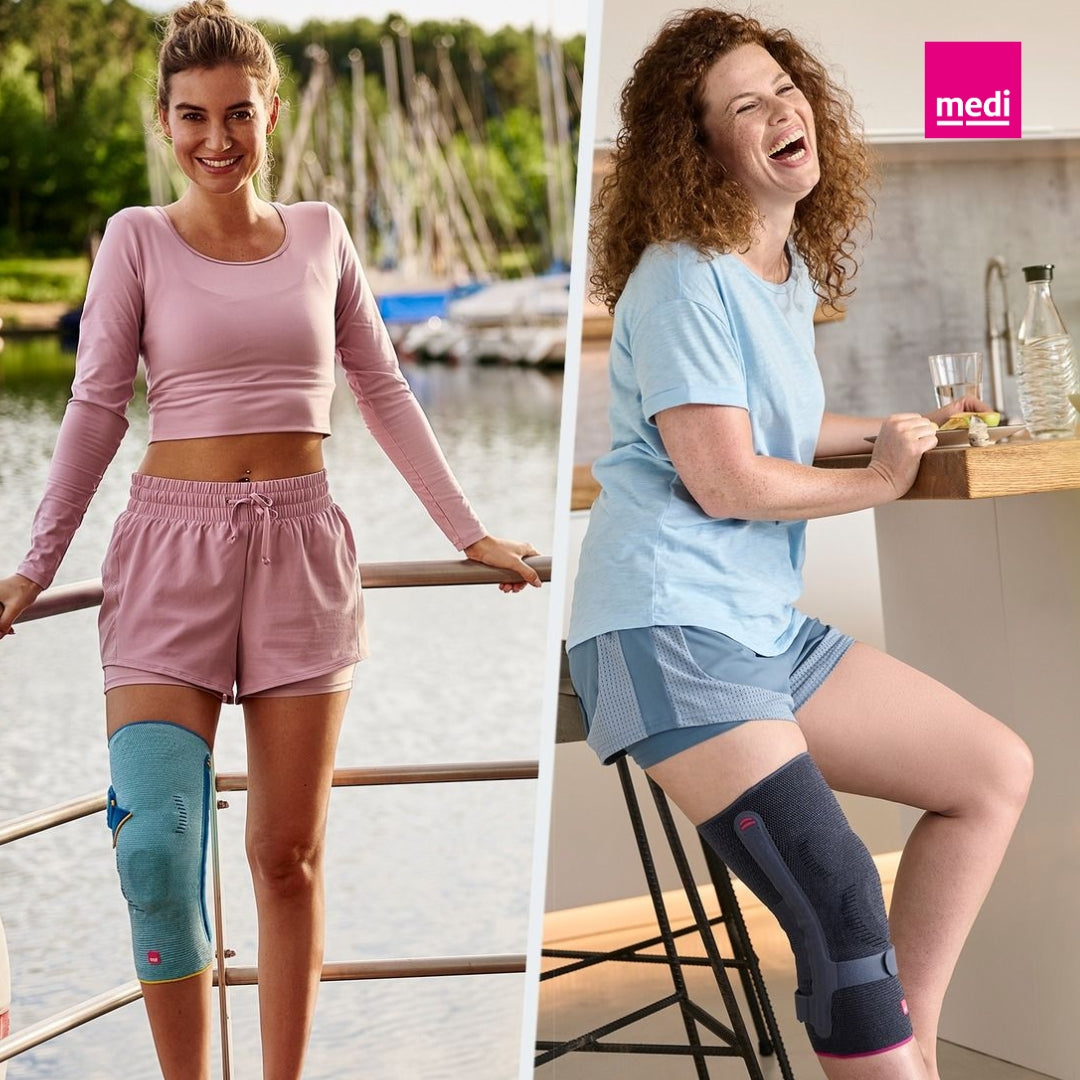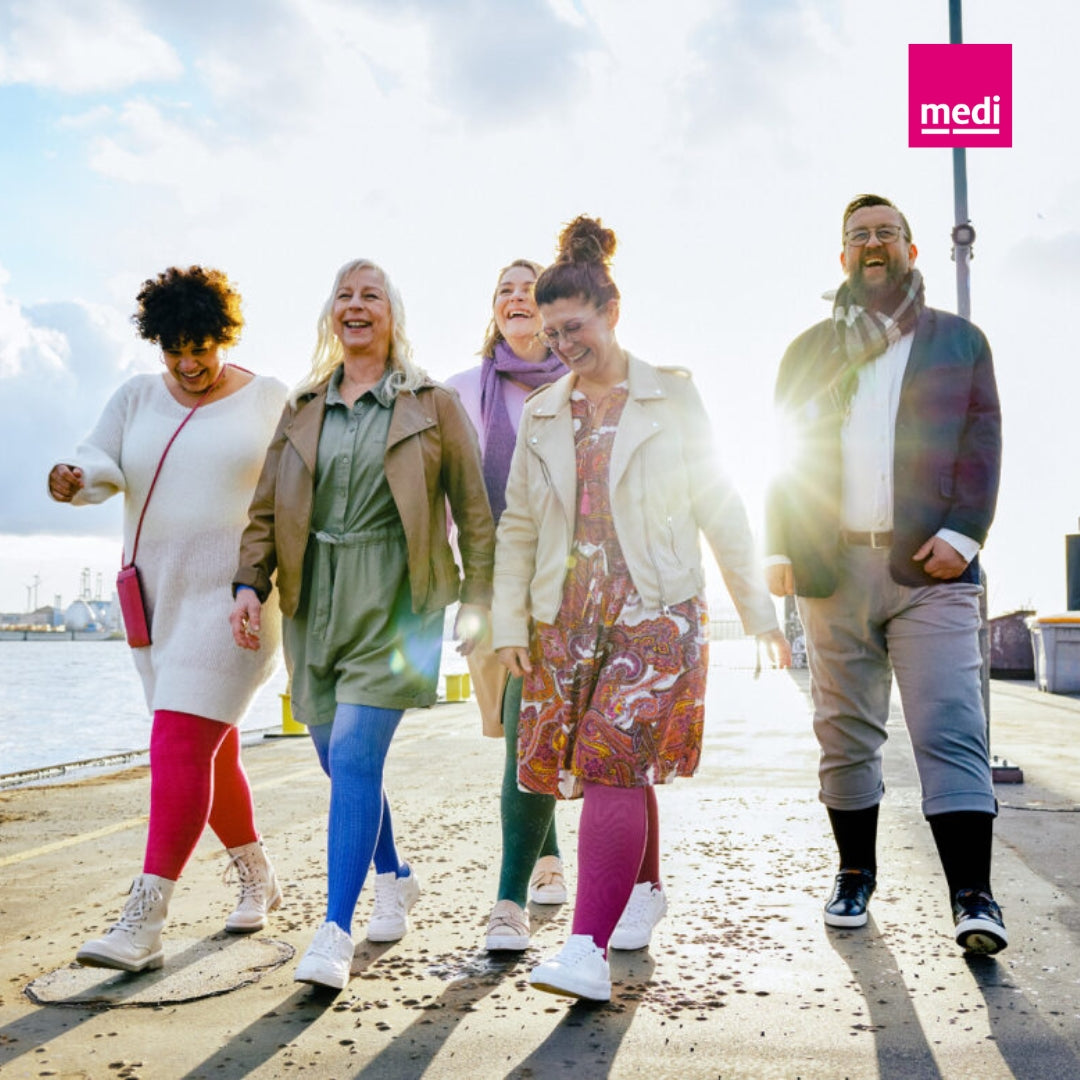Travelling the world is a cherished experience for many, but it can pose certain health risks, particularly for individuals susceptible to deep vein thrombosis (DVT) and other venous issues.
Fortunately, compression therapy, often in the form of travel socks or stockings, has emerged as a crucial ally in preventing and managing these conditions.
In this post, we explore the underlying need for compression therapy, its diagnosis and therapy, the importance of wearing correctly fitted garments, the differences in compression classes, and the vital role of medical-grade products.
We will also discuss the myriad benefits of compression therapy, its recommended usage during travel, and the associated risks.

The Underlying Need for Compression Therapy
Compression therapy involves the application of controlled pressure on the legs and feet through specially designed garments, such as socks or stockings. The primary aim of compression therapy is to improve blood circulation, particularly in the lower extremities. This becomes crucial for individuals who may face challenges with venous return, a common issue for those who spend prolonged periods sitting or standing, such as travellers.
Deep vein thrombosis (DVT) is where blood clots form in the deep veins, typically in the legs. DVT can be life-threatening if a clot breaks loose and travels to the lungs, causing a pulmonary embolism. Travelling, especially on long-haul flights or extended road trips, increases the risk of DVT due to prolonged periods of immobility, dehydration, and reduced cabin pressure.
Diagnosis and Therapy
Once diagnosed, treatment often includes anticoagulant medications to prevent clot growth. However, compression therapy is pivotal in preventing and managing DVT.
Compression garments apply graduated pressure to the legs, with the highest force at the ankles and gradually decreasing towards the thigh or knee. This gradient facilitates venous return by helping the veins push blood back towards the heart.

These garments are available in various compression classes, ranging from CCL1 (light compression) to CCL4 (firm compression).
Understanding Compression Classes
The distinction between compression classes is essential as it determines the level of pressure applied. The wrong compression class can be ineffective or, in some cases, even dangerous.
CCL1 is typically used for mild symptoms or as a preventative measure, while CCL2 is more common for moderate venous insufficiency or post-surgery recovery.
CCL3 and CCL4 are reserved for severe conditions and should only be used under medical supervision.
Importance of Fitting and medi's Expertise
Correct sizing and fitting of compression garments are paramount to their effectiveness. Ill-fitting stockings can cause discomfort or exacerbate existing issues.
It is advisable to consult a healthcare professional for proper measurement and guidance. While many brands offer compression garments, medi stands out for its dedication to medical-grade quality, ensuring consistent compression gradients that adhere to international standards.
Do You Need a Prescription for Compression?
Usually, a prescription is not required to purchase lower-class compression socks or stockings. However, consulting a healthcare provider for advice on the appropriate compression class and fitting is strongly recommended.
Recommended Usage and Health Benefits
For travellers, wearing compression socks during long flights or extended periods of sitting can significantly reduce the risk of DVT. Wearing them for the journey's duration and a few hours afterwards is advisable.
Compression therapy not only can prevent DVT but also alleviate symptoms of venous insufficiency, such as swelling, aching, and fatigue.
Alleviating Risks
Compression socks and stockings can mitigate several travel-related health risks. They promote blood circulation, reducing the risk of DVT and leg swelling.
Additionally, they provide comfort and support for those who need to stand or sit for extended periods, making them ideal for professions that require prolonged immobility.
Compression therapy
Exemplified by the medical-grade products from medi, it is a vital tool in the arsenal of travelers and individuals prone to venous issues like DVT.
By understanding compression classes, seeking proper fitting, and following medical guidance, travellers can ensure their journeys are memorable but also safe and health-conscious.

Whether you're embarking on a grand adventure or have a sedentary lifestyle, compression therapy is a dependable ally in pursuing leg health and overall well-being.
Ultimately, the guidance of a healthcare provider is essential to make informed decisions when selecting compression garments and to prioritise health and well-being, especially when planning for travel or addressing venous issues.





Leave a comment
This site is protected by hCaptcha and the hCaptcha Privacy Policy and Terms of Service apply.